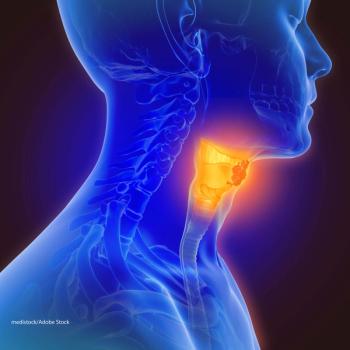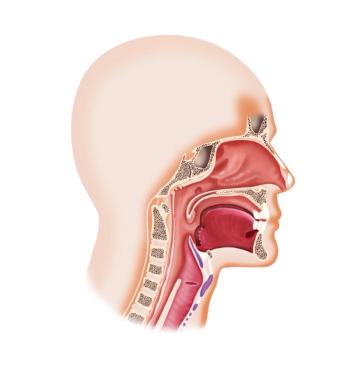
Oncology NEWS International
- Oncology NEWS International Vol 7 No 7
- Volume 7
- Issue 7
Chemoradiotherapy Produces CRs in Inoperable Head and Neck Cancer
PROVIDENCE, RI--Weekly chemotherapy with carboplatin (Paraplatin) and paclitaxel (Taxol) followed by irradiation resulted in a 91% overall response rate in patients with inoperable cancer of the head and neck.
PROVIDENCE, RI--Weekly chemotherapy with carboplatin (Paraplatin) and paclitaxel (Taxol) followed by irradiation resulted in a 91% overall response rate in patients with inoperable cancer of the head and neck.
The regimen led to 20 complete responses and 10 partial responses among 33 patients. Post-treatment biopsies confirmed the absence of residual disease in 17 of the 20 patients who had a complete response, Prakash Chougule, MD, of the Brown University Oncology Group, said at an ASCO poster session.
All patients had histologically documented grade 3-4 squamous cell carcinoma of the head and neck. No patient had received prior radiation therapy or chemotherapy. Involved sites included the larynx (9 patients), hypopharynx (7), oropharynx (8), oral cavity (6), and nasopharynx (3). Sixteen patients had positive lymph nodes.
Each patient received 8 weekly cycles of therapy with paclitaxel at a dose of 60 mg/m² and carbo-platin dosed to an AUC of 1, with concurrent fractionated external-beam radiation at a total tumor dose of 6,660 cGy to 7,200 cGy.
At a median follow-up of about a year and a half, only three patients had not responded to the therapy. On the basis of post-therapy biopsies, 61% of patients had achieved a complete remission, and an additional 30% had a partial response. Eight patients with clinically positive lymph nodes had nodal biopsies, and five had pathologically negative findings.
Mucositis was the major toxicity, as all but three patients developed grade 3-4 mucosal irritation. Seven patients each had grade 3 skin toxicity and candidal infections. Three patients became dehydrated, and two experienced neuromotor effects.
The results suggest that the therapy might extend the possibility of organ preservation to more patients, Dr. Chougule and his colleagues concluded, but longer follow-up is necessary to determine whether the therapy confers a survival advantage.
Articles in this issue
over 27 years ago
Calling the National Cancer Instituteover 27 years ago
Six Cycles of AT Found Safe in Advanced Breast Cancerover 27 years ago
New Drug Promising in Advanced Pancreatic Cancerover 27 years ago
Herceptin/Chemo Effective in Metastatic Breast Cancerover 27 years ago
Virtual Reality Exhibit Simulates Cancer Fatigueover 27 years ago
New Director of AIDS Researchover 27 years ago
Exhibit Explores Healing Power of Creating Artworkover 27 years ago
Update on Trials of Thrombopoietin for Platelet Recoveryover 27 years ago
Amifostine Reduces Xerostomia After RT for Head and Neck Cancerover 27 years ago
National Survey Documents Gap in Quality of HIV/AIDS CareNewsletter
Stay up to date on recent advances in the multidisciplinary approach to cancer.



















































































